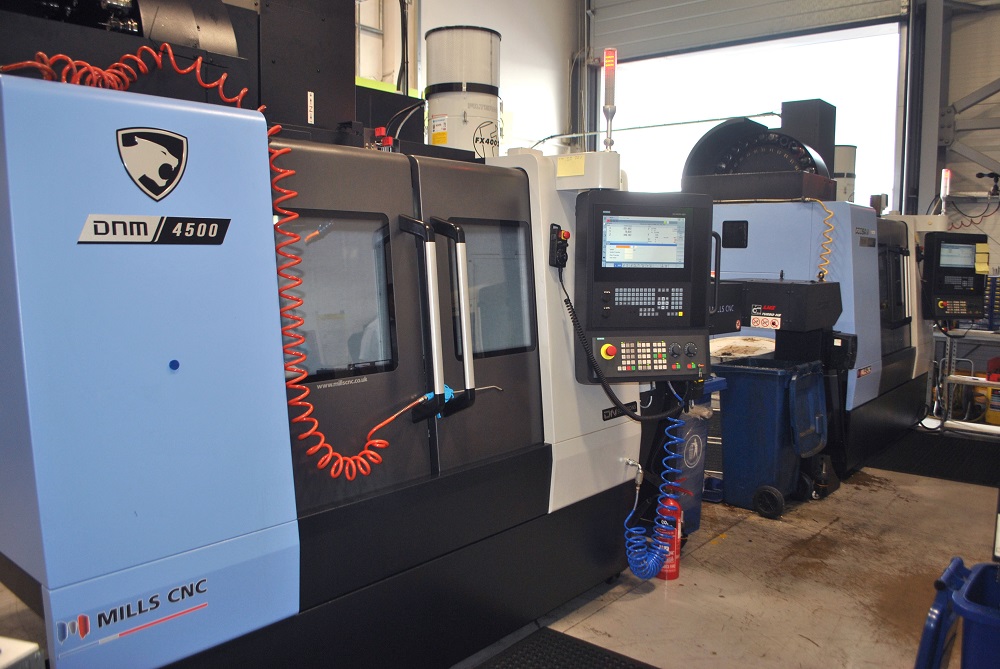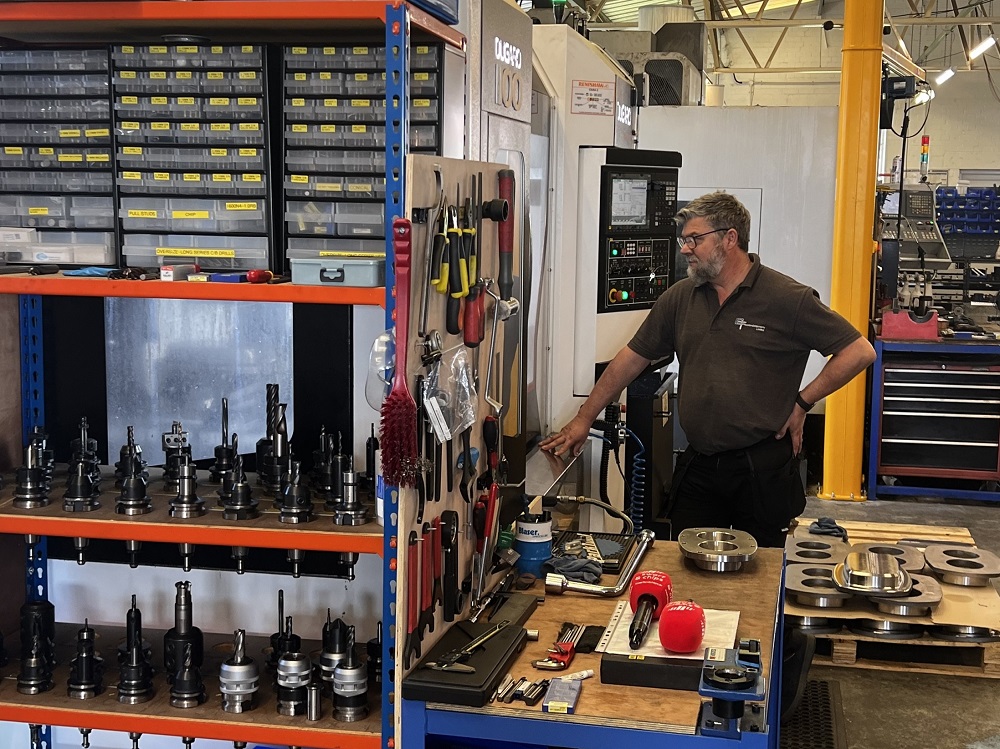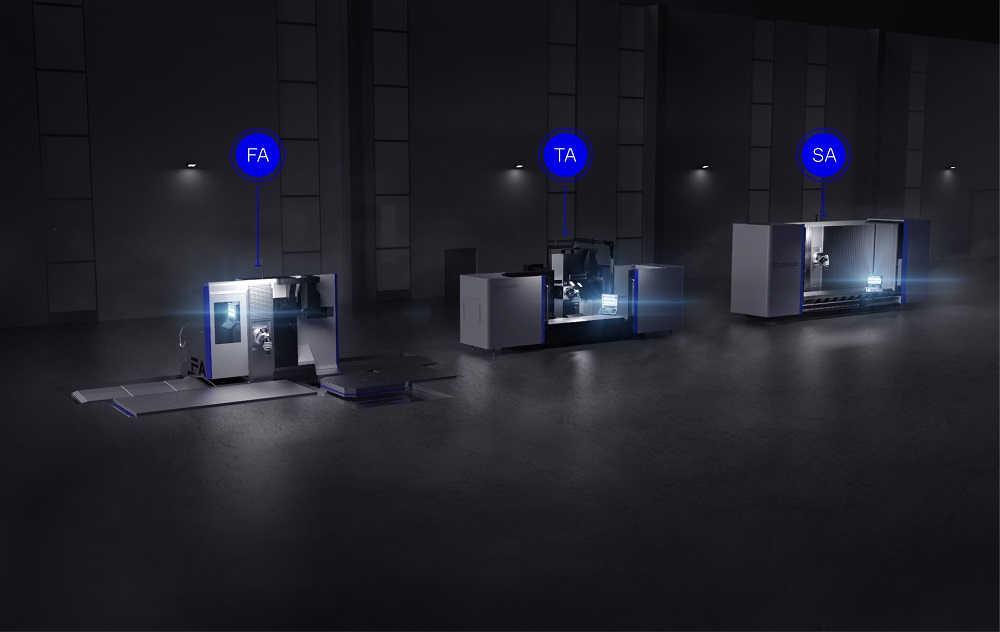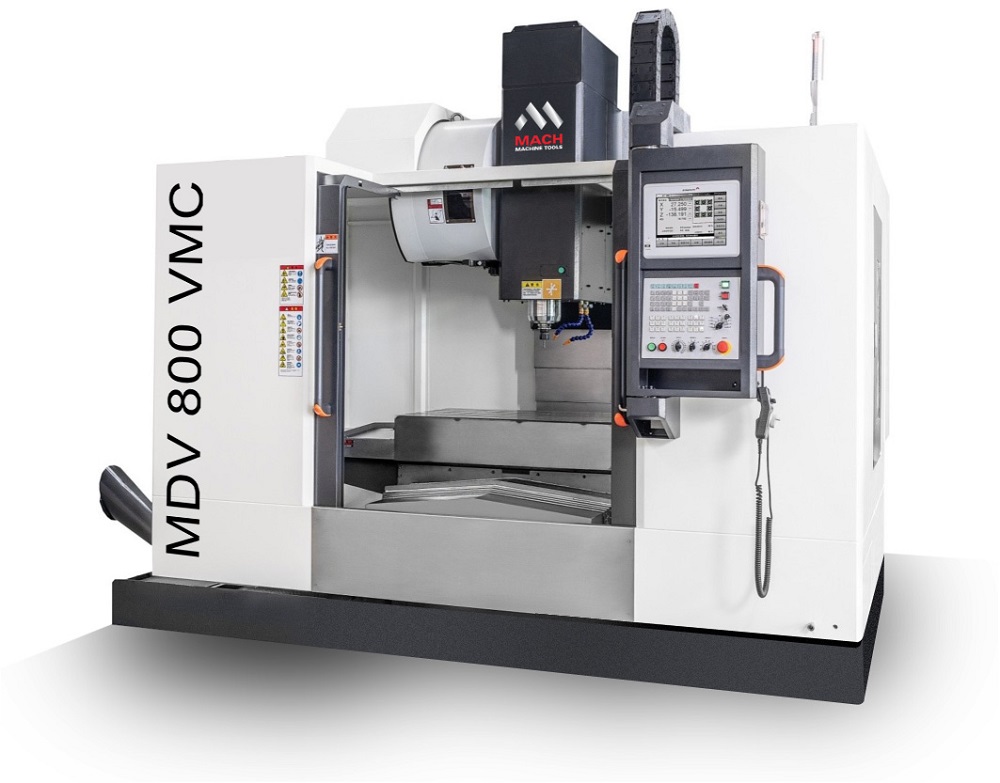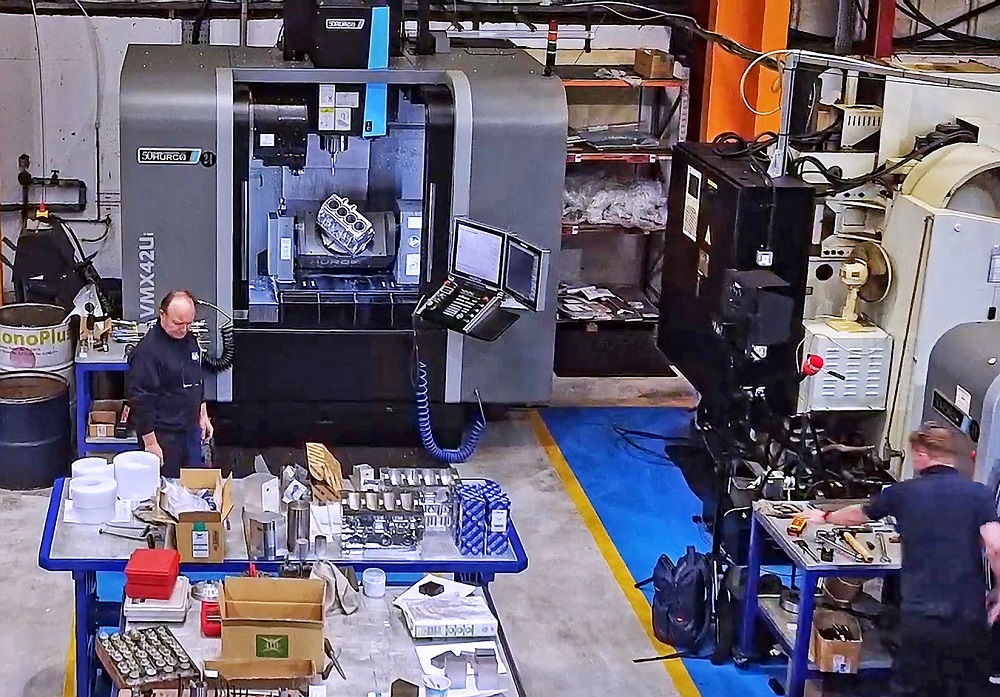Mills CNC has supplied subcontract specialist EDM Precision Technologies with a new vertical machining centre.The machine, a compact DN Solutions three-axis DNM 4500 equipped with Siemens 828D control, now sits adjacent to the company’s first DNM 4500 machining centre, acquired in 2018, to create a flexible, high-productivity milling cell.
EDM Precision’s new DNM machine has the exact technical specification as the first, featuring: a 12,000 rpm BT40 spindle with though-spindle-coolant capability; 30-position ATC; and 1000 x 450mm worktable with 600kg load.The latest DNM 4500 also features a Renishaw tool and workpiece probing systems for fast and efficient set-ups.
Says owner and managing director Paul Waldron:“Our first DNM 4500 proved to be a great investment and a huge success. The machine is fast, accurate and reliable, so when we were looking to upgrade our in-house milling capabilities still further, we decided to go ‘like for like’ and order a second DNM 4500.”
The company’s customers are diverse and operate in the motorsport, aerospace, medical, automotive, defence, and scientific equipment and instrumentation sectors. They also include a significant number of universities and research institutions. All have high demands. For instance, part accuracies of ±5 µm and surface finishes down to Ra 0.8µm are tight and non-negotiable.Turnaround times are equally demanding.
EDM Precision’s new DNM 4500 is clearly important and integral to the company’s ability to meet its customer’s promises.
Concludes Waldron:“Our new DNM 4500 is a great performer and, since being installed, hasn’t missed a beat.The machine was delivered and installed quickly and with minimum disruption and, as intended, has fast become a valuable asset that will facilitate significant growth in the future.”
For further information www.millscnc.co.uk






